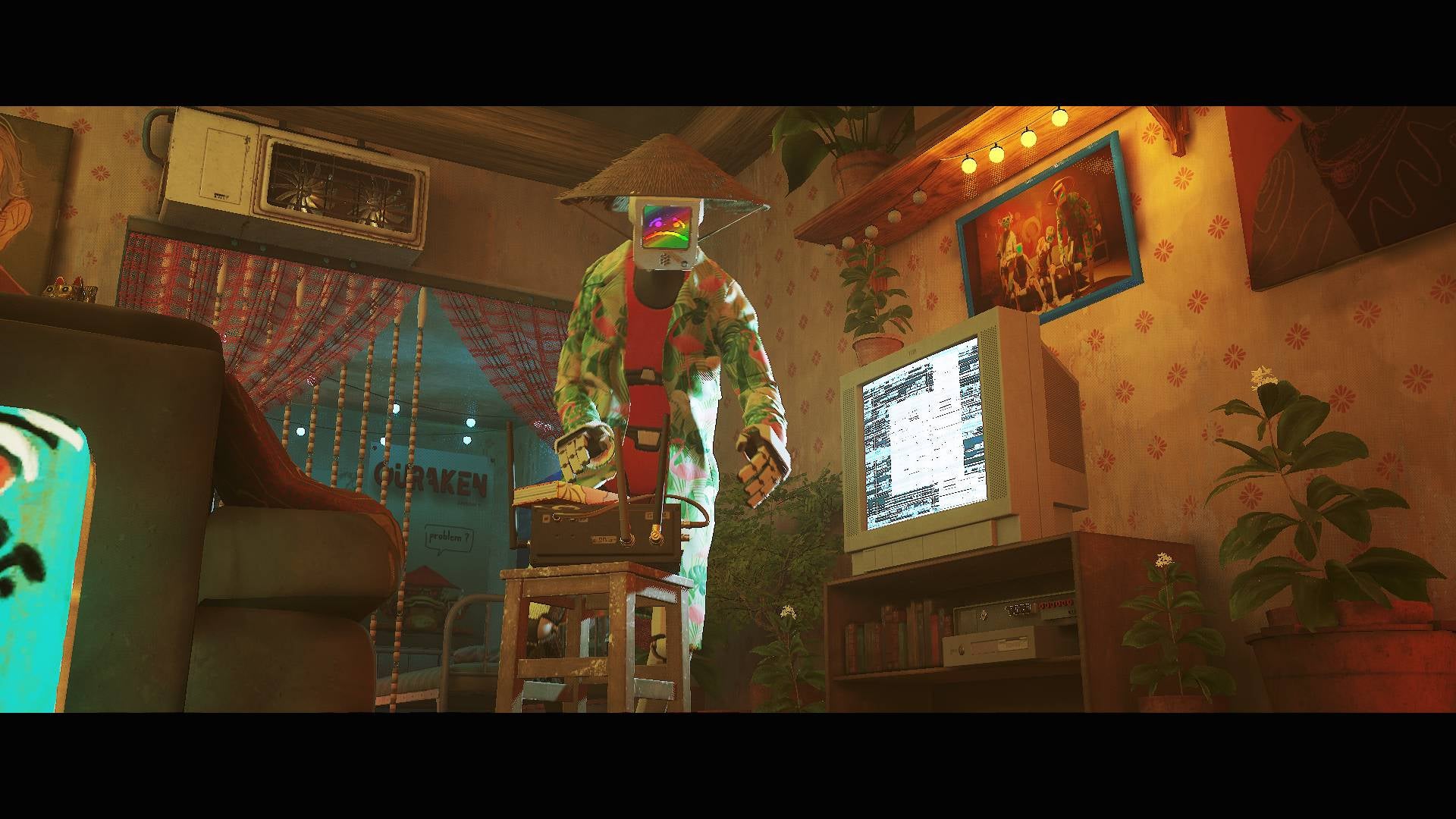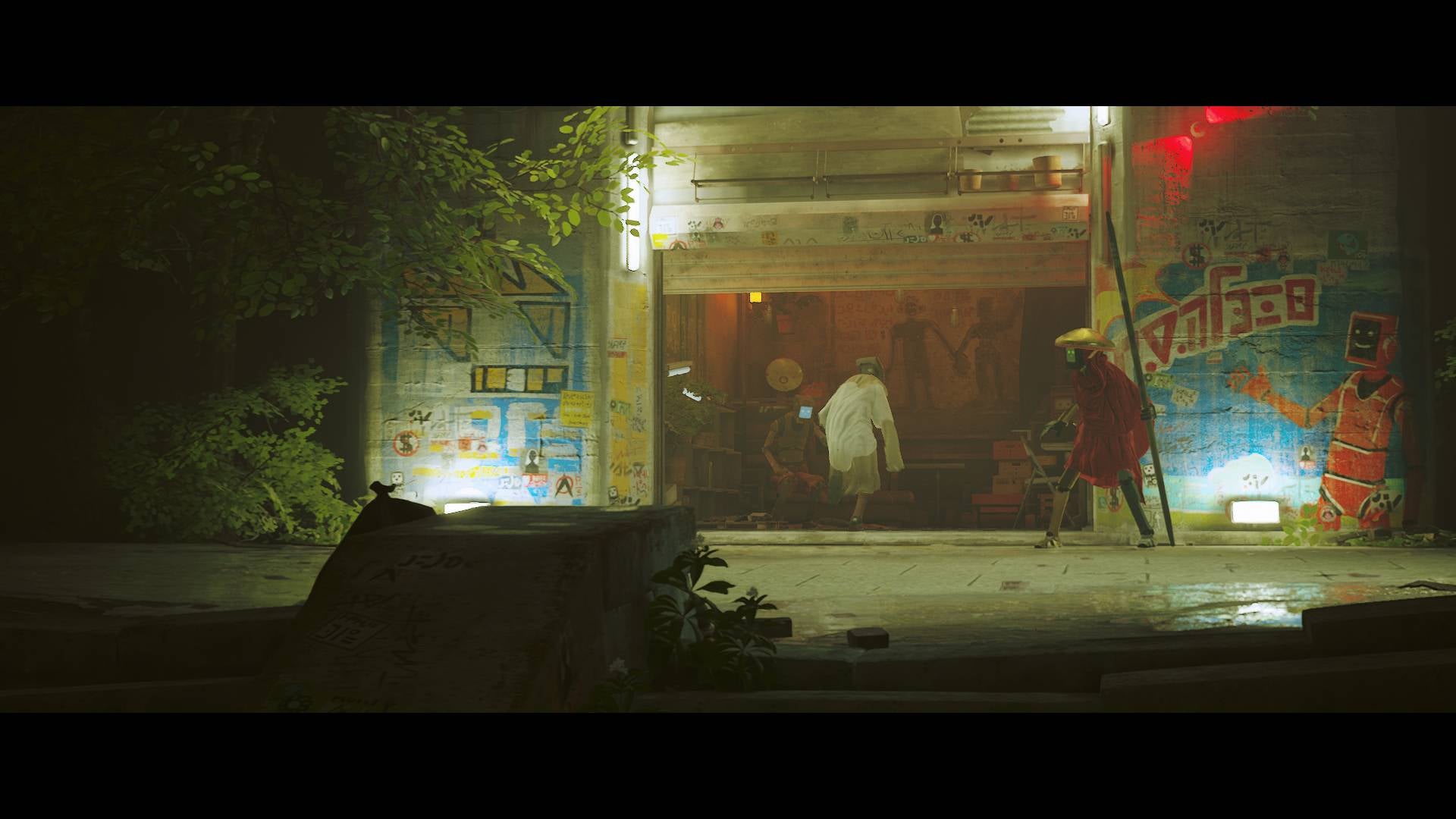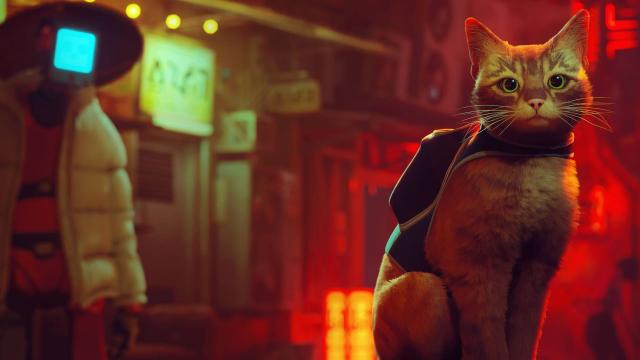If you’ve felt uncomfortable about the rice paddy hats in Stray, you aren’t the only one. Stray lifts Asian aesthetics to evoke exoticism and danger, but it doesn’t engage with the history of the city it appropriates. This is especially problematic because its real-world setting carries painful historical baggage that can’t be reduced to neon signs and cramped apartments.
With more than three million people per square mile (which is 47 times more densely populated than Manhattan), the Walled City was the most densely packed city in world history. The streets were lit by neon signs because the buildings didn’t allow much natural light to filter in from above. The developers of Stray told USA Today that the Walled City of Hong Kong was “the perfect playground for a cat.” The artists at BlueTwelve Studios were inspired by how the real-life city was “organically constructed and was filled with details and interesting points of view,” such as the air conditioning units and exposed pipes. And they weren’t the only ones who admired the environment. Photographers and architects lauded the ingenuity in the ways people lived without safety codes or a centralised government.
But that organic construction came about for painful historical reasons. The Walled City was originally a Qing dynasty era military base. It became a separate enclave from British-controlled Hong Kong after China was weakened by the Sino-Japanese War. Japan, China, and Britain all tried to lay claim to the Walled City throughout its history. To ease international tensions, both China and Great Britain eventually gave up trying to govern the Walled City after the end of World War II. The ensuing lawlessness fermented organised crime and opium dens. The Triad gangs turned the enclave into “the epicentre of Hong Kong’s narcotics trade.” None of this context is particularly apparent when you explore the dusty streets of Walled City 99.
Jessie Lam, a video game concept artist whose family originates from Hong Kong, explains, “[The Walled City] was this super packed city block full of crime and destitution — thanks triads — -that it took decades until it was finally demolished. We don’t talk about the highrise coffin sized apartment rooms these days…There is a muted anger there.”
The history of the Walled City is inextricably tied to colonial rivalries, but none of it is represented in Stray. In the game, the city was a shelter built to protect humans from the plague. The only sentient beings left are self-aware robot “Companions” who have built their own society in humanity’s absence. I later appreciated their charming personalities, but when I first met these robots, my first thought was: “Why are they wearing rice paddy hats?”

Conical rice hats have a troubled history within the Asian diaspora community. They’re used as a racial shorthand to indicate Asian origins, regardless of the actual context. Clothing retailer Abercrombie and Fitch, for example, once used images of Chinese men in rice paddy hats in its product line. While the existence of farmer hats is not offensive by itself, it becomes astoundingly racist when used in unrelated imagery, such as a racist parody of a laundry business. Protests and angry letters forced Abercrombie and Fitch to pull the offensive t-shirts from their stores.
Thankfully, Stray meets the bare minimum of not racist language to describe the robots (even if its gratuitous use of the Japanese language in fictional Hong Kong is a bit eyebrow-raising). But the game’s rampant appropriation of Asian history and culture needs to be supported by care in design and implementation. Singapore-based Alexis Ong wrote an excellent Polygon article about Stray’s accuracy to Hong Kong, while others like Lam are less impressed by how the game portrayed the Walled City.
“The graffiti and signage is a huge question mark. Anything in English is clearly player facing but [in-game], who would those tags be for?” Lam told Kotaku. “It’s one thing if it’s robots passing messages to each other but some overlap each other instead of being written around each other. Which calls into question if said developers also understand graffiti culture and the etiquette. But also…Why deliberately make some robots wear rice hats? When there’s clearly no way to go outside or anywhere in game to farm?” Headwear such as baseball hats have become ubiquitous to urban fashion, which could explain the companions copying this style, but rice hats have not. These conical hats have been used to denote Asianness in western media, and Stray cannot separate itself from this history.
Since this comes up every time I write a blog about Asian representation: No, I don’t believe that BlueTwelve Studios is intentionally racist. Nor do I think that the resulting game is the worst offender when it comes to cultural appropriation. Its foibles are typical of the cyberpunk genre as a whole. Cyberpunk originates from America’s anxieties about Japan’s economic dominance, but cyberpunk media is often reluctant to populate their cities with Asian characters. I felt the same sense of alienation while I played Stray.
I’m sure that the developers weren’t gleefully rubbing their hands together when they decided not to implement any human characters. But Walled City 99 was yet another cyberpunk city in which people like me weren’t welcome. Not unless I was a robot in a conical hat. And that doesn’t sit well with me either. “Asian Robot” is a Hollywood troupe that frequently dehumanizes Asian people (Ex Machina, Cloud Atlas, The Matrix). There’s even a genre name for it: Techno-orientalism. In these works, Asia is expressed through “an aesthetic sensibility rather than by representing or centering actual Asian characters.” Stray falls squarely within this genre.

“[There’s] lots of the same general ideas being recycled a lot across projects and sometimes that extends into the cyberpunk genre,” Lam told Kotaku over Twitter messages. “The orientalism as a whole isn’t new.”
I just wanted to play a cute cat game without the techno-orientalism. Unfortunately, Stray does not interrogate its creative influences at all. And from the moment that the developers decided to base their game off an enclave that was created by British colonialism, they had a responsibility to grapple with its history. Stray takes so much care in how it represents cats. I just wish it was as consistent about real humans’ legacies.

Leave a Reply